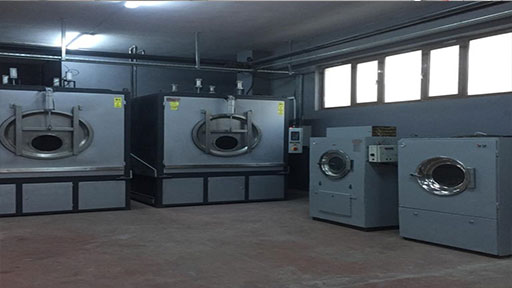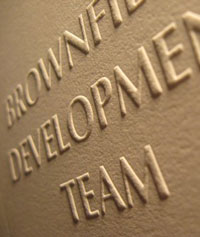The Importance of Washing Textiles: First of all, the process that gives air to a ready-made textile product is washing. Due to the nature of the textile fabric, it is not suitable for both health and usage to be used or sold without being included in the post-production washing or finishing processes. In this process, the textile washing sector has an important place.
Textile Washing Principles: The type of washing the product to be washed is determined by looking at the following features: The main criteria such as the type of the product, the desired appearance and attitude, the durability of the product to washing processes, and the type of fabric are considered. The process of washing textile products consists of stages that are very difficult and require experience. The formulas that emerged after the researches and experiments on this subject ensure that different colors and effects are obtained from the washed fabrics. Here we will examine the main types of washing:
Textile Washing Types:
- ENZYME WASH: Enzymes are a kind of protein, they have been used in the textile industry in recent years, and have come to the fore in the washing industry due to their ability to break down starch and cellulose. The ground color of the products is tried to be captured with enzymes used according to different types and temperatures.
- STONE WASH: It is a type of washing made with volcanic natural stones called pumice stone. Different sizes of stones can be used depending on the thinness and thickness of the product or the lack or abundance of the desired effect. By using the enzyme together with the stone, a distinctive effect can be achieved in a shorter time without damaging the product. In addition to this process, bleaching or silicone softening processes can also be performed.
- ENZİM SUPER STONE WASH: It is a type of washing applied using pumice stone and enzymes.
- ICE WASH: It is the process of reducing textile products to a very light blue color. In this process, potassium permanganate or sodium hypochlorite is used.
- Consciousness Washing: It is the process of catching a dark blue color with the method applied in ice washing.
- SNOW WASHING: It is the process of keeping the pumice stone in permanganate and processing the product with this stone only in the machine.
- BLEACHING: It is the process of fading the color of the textile product (especially textile). It is effective in cotton products. This is a kind of reduction reaction. This is done by using potassium permanganate or sodium hypochlorite. It is the processing of only the stone and the product in a washing machine after the capillary pumice overflow impregnation of reducing chemicals.
- SILICONE WASHING: It is a softening process with softeners used in macro or micro emulsions known as silicone oil.
- NORMAL WASHING: It is a washing process with normal water.
Textile Dyeing Types:
- Antique Painting: Antique painting process is performed on the surface of the fabric and the product is given an aged appearance. The color gamut is limited; It is difficult to achieve bright and vivid colors, very dark colors cannot be obtained. Since the process includes wearing stages, the yarn must be durable. Effects may occur between the sample dyeing and the delivered product due to the friction created by the excess of pieces during the processes.
- Batik Dyeing: Batik dyeing is a dyeing method in which products are dyed by knotting them in various ways, thus obtaining a patterned appearance. Various names such as tie dye dyeing, shibori dyeing, bonding dyeing, bulk dyeing, deep dye, dip dyeing, ice batik or crystal dyeing are used for this type of dyeing. The patterns made by the batik dyeing method are unique, bright colors are preferred because they are generally vibrant patterns. .
- Natural Dyeing: Since natural dyeing is carried out with zero chemicals and only waste fruit and plant peels, it is completely natural and harmless. A soft and velvety texture is obtained. Natural dyed products are also very beneficial for health; It is anti-fungal, antibacterial and protects from UV rays. In order for natural dyes to be used in industrial dyeing, raw materials must meet certain standards and be sustainable. Dynamic Painting supplies natural dye raw materials from manufacturers whose certifications have been completed, and our dyed products are presented to our customers with accredited laboratory-approved certificates and content analysis.
- Organic Dyeing: In organic textile production, all processes of the products from cotton to the final product reaching the consumer are subject to the strict rules of certificate standards. Dynamic dyeing has GOTS and OCS certificates for dyeing organic products. In our facility, dyeing is carried out by our personnel specialized in this field, using organic raw materials. Organic reactive can be dyed, organic pigment can be dyed, but organic antique dyeing is not yet possible.
- Pigment Dyeing: While pigment dyes were only obtained from natural sources in the past, today they are produced largely synthetically and almost every color is obtained by this means. In the textile industry, pigment-dyed garments are becoming more and more common, as fashion trends from different periods (vintage) have become popular again recently. Pigments are insoluble in water, binders are required to adhere to the fibers. During the dyeing process, the pigment forms a film that covers the fibers and does not penetrate deeply into the fibers. For this reason, dyed products wear out as they are washed and gain an old but lively appearance over time. Painting process; Cationization, Pigment addition, Binder addition, Drying takes place through the stages.
- Reactive Dyeing: Reactive dyes are water-soluble dyes and are used for dyeing cotton textile products. Plain (without effect) dyeing takes place. These paints are classified as cold and hot reactive paints according to their reaction rates and application temperatures. The overall color fastness achieved is quite good when properly dyed and washed. Cold reactive dyes are used in our facility; The advantage of cold reagent is faster dyeing, less chemical and energy consumption.


